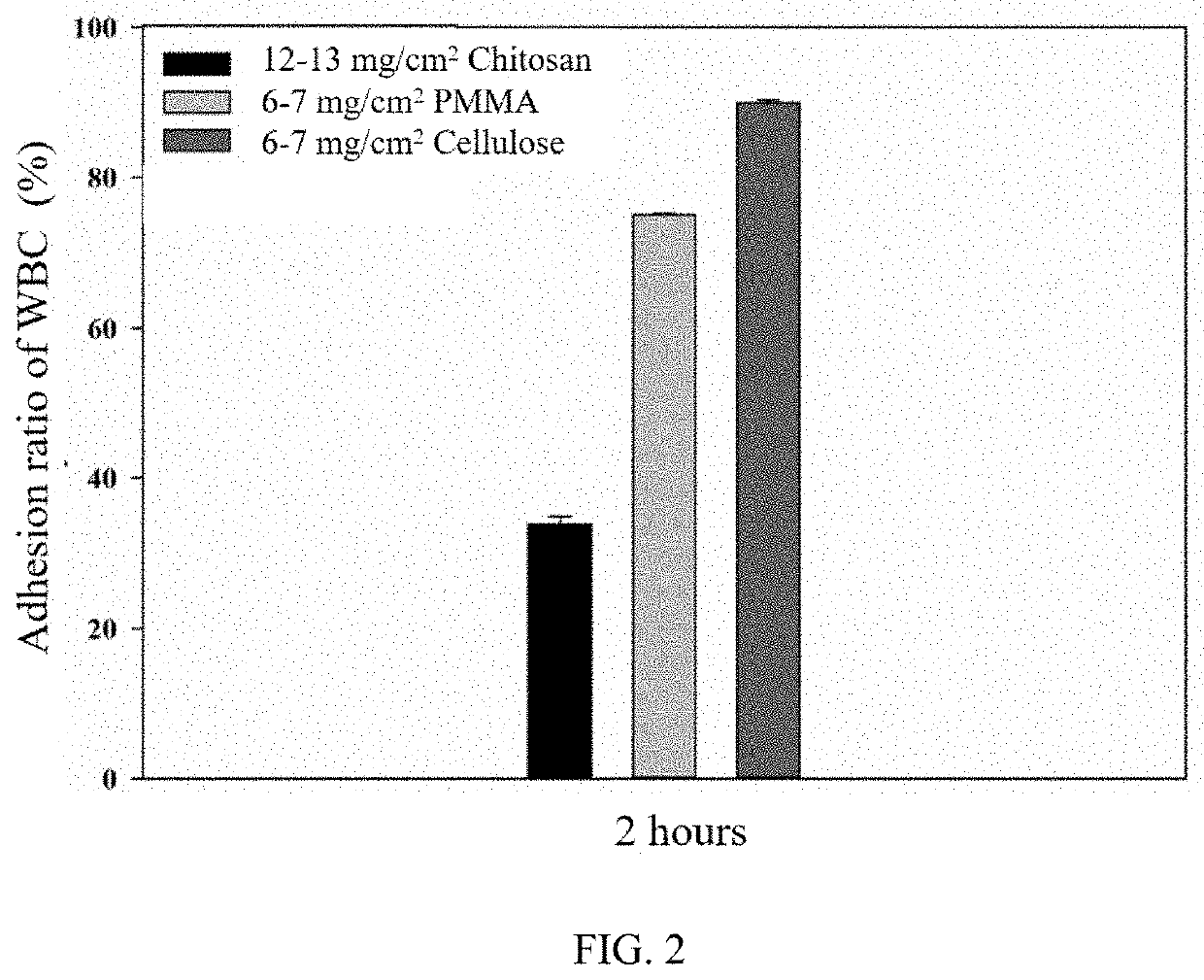Method for circulating tumor cells isolation
a tumor cell and isolation method technology, applied in tumor/cancer cells, biomass after-treatment, biochemistry apparatus and processes, etc., can solve the problems of cumbersome inspection procedure, inability to achieve standardized testing, and prone to deviation of repeated test results of the same sampl
- Summary
- Abstract
- Description
- Claims
- Application Information
AI Technical Summary
Benefits of technology
Problems solved by technology
Method used
Image
Examples
example 1
on of the Isolating Cultural System of Circulating Tumor Cells
[0063]5 grams of cellulose and / or its derivatives were poured into 100 ml of 5% NaOH. After stirring evenly, the solution is placed at −20° C. for 4 hours to reach complete frozen. Then, the frozen solution was placed at room temperature until completely thawed and was stirred. The freezing-thawing procedures were repeated 5 times until the cellulose solution became translucent. The solution was coated on the culture container in an amount of 12-13 mg / cm2 of cellulose. The coated container was placed at room temperature 26.8-32.6° C., humidity 34.2-52.1%. After drying in the shade for 24 hours, the solid state of the cellulose is gelatinous or jelly-like as shown in FIG. 1. 1 ml of 0.5M HCl was dropped into the coated container and leaving it for 5 minutes. After that, HCl was poured off and the culture container was rinsed twice with filtered water. After sterilization of UV light exposure for 30 minutes, it can be used ...
example 2
od Cells Adhesion Test
[0065]200 ml of whole blood was taken and was centrifuged at 40 rpm for 20 minutes. The upper layer of the plasma was aspirated off, the buffy coat was obtained, and RBC lysis buffer was added to make the volume ratio 1:3. After uniformly mixing, centrifuge at 15 rpm for 5 minutes and aspirate the supernatant. Saline was added and was mixed well, then centrifuge at 15 rpm for 5 minutes again. The obtained white blood cells were equally divided and cultured in a 10 cm dish, which coated with 12-13 mg / cm2 of Chitosan G214, 6-7 mg / cm2 of PMMA, and 6-7 mg / cm2 of cellulose. The culture dish was placed in 5% CO2 incubator at 37 for 2 hours. After that, supernatant was collected and the number of white blood cells which not adhered to the material was calculated through an automated hematology analyzer. The adhesion ratio of blood cells on the material can be obtained by the following formula:
Adhesion ratio of white blood cells (%)=[(Total number of white blood cells ...
example 3
ls Adhesion Test
[0068]2×104 of fluorescently labeled cells of A549 (human lung adenocarcinoma cells), HT29 (human colon cancer cells) and HeLa (human cervical cancer cells), were separately provided and cultured on TCPS, the culture container coated with 12-13 mg / cm2 of methyl cellulose+cellulose (40:1), the culture container coated with 12-13 mg / cm2 of cellulose for 2 hours.
[0069]FIGS. 4A-4C are the results of A549 human lung adenocarcinoma cells cultured on different materials. FIG. 4A clearly shows that the A549 cells adhere to TCPS. FIG. 4B shows that the A549 cells are suspended in the culture medium within the cell culture container coated with 12-13 mg / cm2 of methyl cellulose+cellulose (40:1). FIG. 4C shows that the A549 cells are also suspended in the culture medium within the cell culture container coated with 12-13 mg / cm2 of cellulose.
[0070]FIGS. 5A-5C are the results of HT29 human colon cancer cells cultured on different materials. FIG. 5A clearly shows that the HT29 cell...
PUM
| Property | Measurement | Unit |
|---|---|---|
| temperature | aaaaa | aaaaa |
| adhesion | aaaaa | aaaaa |
| cell size isolation method | aaaaa | aaaaa |
Abstract
Description
Claims
Application Information
 Login to View More
Login to View More - R&D
- Intellectual Property
- Life Sciences
- Materials
- Tech Scout
- Unparalleled Data Quality
- Higher Quality Content
- 60% Fewer Hallucinations
Browse by: Latest US Patents, China's latest patents, Technical Efficacy Thesaurus, Application Domain, Technology Topic, Popular Technical Reports.
© 2025 PatSnap. All rights reserved.Legal|Privacy policy|Modern Slavery Act Transparency Statement|Sitemap|About US| Contact US: help@patsnap.com



